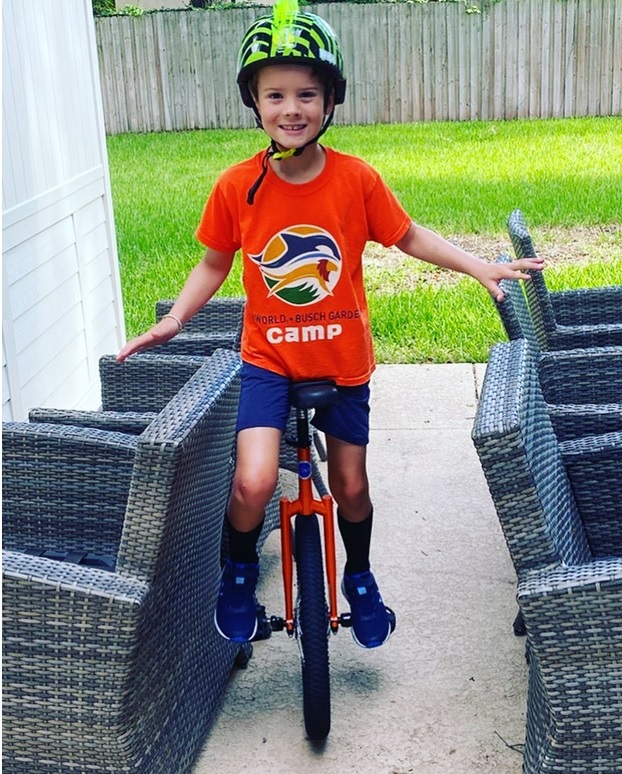5 Things to Know Before You Start Learning to Ride a Unicycle [Consider This Before Buying That Schwinn Retro Unicycle!]
10/06/22
Every year, individuals all over the world take it upon themselves to officially master the unicycle. Doubtless, many of them have been thinking about it for some time before they commit and buy one.
Also doubtless, many of them succeed. Something unique about unicycling is that no matter what your background or native language is, the challenges of riding are largely the same.
Therefore, these tips which we are about to offer you will benefit you no matter why you plan to ride. These are the 5 things we’d like to tell everyone that seriously wants to learn how to ride a unicycle.
So, with no further ado…
1.Get a unicycle that is appropriate for the riding discipline that appeals to you. [That is, if you’re into mountain unicycling, get a mountain unicycle!]
This is the most important piece of advice we have. If you are thinking about learning to ride a unicycle, figure out what your end goal is and buy a unicycle that is appropriate for that pursuit. Then, learn to ride on that one.
Granted, there is a time and place for so-called “beginner unicycles” but the best advice we can offer you is this: if you intend to take up mountain unicycling, learn on a mountain unicycle. If you intend to ride freestyle or take up unicycle sports, learn on a freestyle unicycle. And, if you’ve really got your eye on one of those flashy Schwinn unicycles in our catalog - learn to ride on that.
In other words, don’t learn on a different unicycle just to put it down and get a new unicycle a couple of months or years down the line - that’s not necessarily productive.
This one tip can save you not only effort but money.
2.Get a unicycle that fits you and have a handrail ready.
Second, it is imperative that you get a unicycle that fits you. While you can adjust the seat post height (within reason) to accommodate different dimensions, the main factor behind unicycle sizing is the wheel size.
The smaller the wheel, the shorter the rider should be, and the larger the wheel size, the larger and taller the rider will need to be in order to reach the pedals. Inseam measurement is the dimension that determines the size unicycle you should be riding. We have written about this before and you can find more inseam measurement information at the previous link, as well as in each product listing. Don’t make this harder on yourself than it needs to be. Learning to ride a unicycle is hard enough; start with a model that’s appropriate for your height and size.
Additionally, we recommend that you learn to ride via the aid of a handrail. Whether you install a handrail onto a wall or improvise a method is up to you, but a handrail is irreplaceable as a sort of unicycle “training wheel,” if you can excuse the pun.
A handrail will condition you to put all of your weight in the saddle so you can start building muscle memory and conditioning core muscle groups that you will need to balance and maneuver the unicycle. It will also help prevent unnecessary, unplanned dismounts (they will still happen, but a handrail can help minimize them).
Oftentimes, riders find that the steepest learning curve is associated with honing the creative thinking skills that accompany learning to master a unicycle. Using a handrail as an aid will help with these too, as you learn to balance and work with the variables that arise and which affect balance, handling, and more.
Finally, if you don’t have a handrail and don’t want to install one, you can improvise with two chairs with high backs. In some ways, these are better than handrails because you can set them up anywhere you have level ground. Just set them up one on either side of you and get practicing.

3. Raise the saddle up to force yourself to sit in the saddle instead of standing on the pedals.
When you’re just starting out, another suggestion we have for you is to raise the saddle as high as reasonable, which will encourage, even force you, to put more (or all) of your weight in the saddle.
It’s a common problem for many learners and beginner riders to want to stand on the pedals, but this can throw off your balance and make it difficult for you to respond to changing variables. Keeping your weight on the saddle and off the pedals will make it easier for you to manipulate the unicycle and will keep you more agile overall.
4.You probably don’t need a brake.
Some aspiring riders see unicycles equipped with brakes and think “I want that.” However, want or not, the truth is most riders don’t need a brake, not until they are an experienced unicycle rider with terrain that calls for a brake.
While brakes on unicycles are cool features that make a unicycle look advanced, that’s exactly what braking is - a skill that is reserved for advanced, experienced riders.
Most beginner riders will not be ready for a brake for quite some time. True, it can help you ride longer and farther more comfortably and with less fatigue, but most of the time, you just don’t need it when you are just learning to ride.
Many unicyclists own between 2 and 3. If you stick with it, make your second or third unicycle a model with a brake, if you really want one. You just don’t need it for your first one.
5. Keep it simple: all you need are a good pair of shoes, some comfortable clothing, and of course, appropriate safety gear.
Finally, don’t overthink this. You don’t need super-special gear, shoes or riding clothes. All you need are a comfortable pair of athletic shorts and a light shirt, and a set of athletic shoes that will support and protect your feet while allowing for a high degree of sensitivity. Sneakers and running shoes are both fine.
You don’t need to go out and break the bank on fancy riding clothing. Let that be a later expense if you really want it. First, learn to ride, and remember this maxim going forward: if you can walk it you can ride it.
One area in which you might need to spend a bit is on personal safety gear. Always wear a helmet when riding (even when practicing) and we recommend a good set of gloves (and wrist guards) along with elbow pads and knee pads.

Starting Out [Now You Can Get That Schwinn Retro Unicycle or Mountain Unicycle!]
So, with that said, what’s a good place to start? Well, again, start with the model you want to ride, in an appropriate size, that is.
If you like the look of one of the Schwinn retro unicycles on our website, go ahead and get it. (We carry Schwinn 20 and 24 inch models.)
If you want to get into mountain unicycling, check out the Nimbus Mountain Unicycle (available in our mountain unicycle collection in a few sizes and colors). This is a good place to start. It offers incredible value and durability. You could throw one of these off the roof, jump off the roof onto it, and ride off into the sunset. They’re that tough.
(Disclaimer: please do not throw your unicycle off a roof or jump off any rooftops yourself. That hyperbole was solely intended to communicate the “toughness” of Nimbus mountain unicycles. And yes, they are tough; but please, don’t jump off a roof.)
Otherwise, just get a model that fits your dimensions, and if you have any questions about sizing, give us a call at 678-494-4962 and we will be glad to help.

![5 Things to Know Before You Start Learning to Ride a Unicycle [Consider This Before Buying That Schwinn Retro Unicycle!] 5 Things to Know Before You Start Learning to Ride a Unicycle [Consider This Before Buying That Schwinn Retro Unicycle!]](https://cdn11.bigcommerce.com/s-mrkn324fu0/images/stencil/190x250/uploaded_images/ucy1.jpg?t=1665050495)